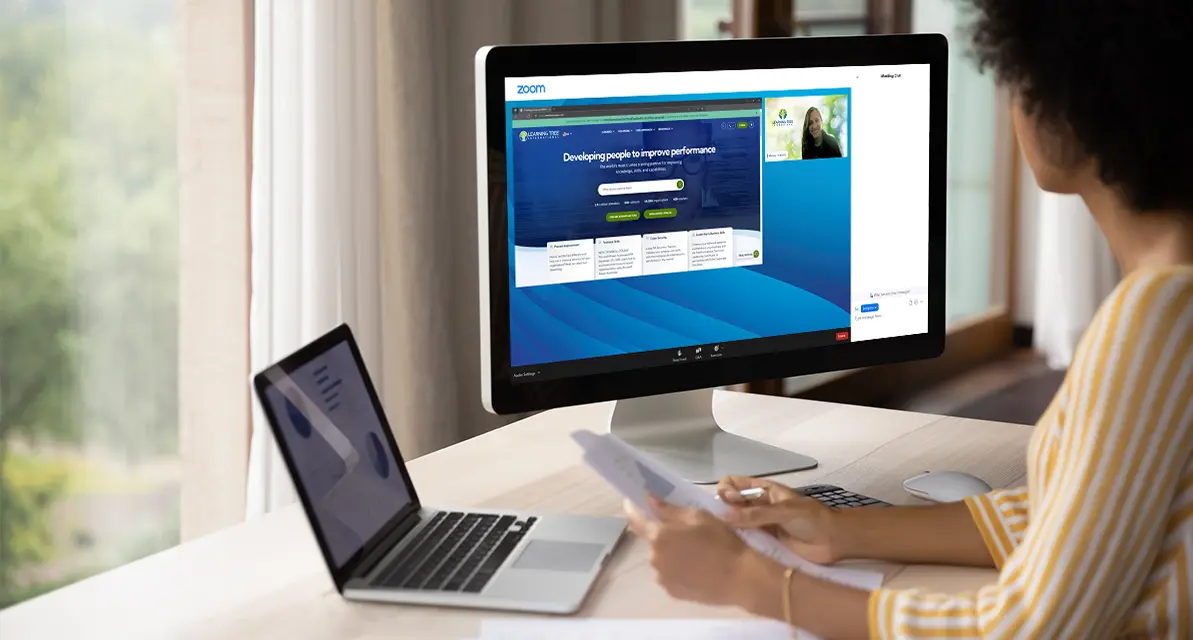2-day instructor-led training course
After-course coaching available
- End-of-course exam included
Get the Advantage $5,150
- Take this course and gain unlimited access to more than 300 virtual instructor-led courses
- Future-proof your career with more than 100 sought-after certifications in the market
- Build real skills through hands-on learning in more than 180 virtual labs
- Grow your skills and capabilities with more than one course at a time and save
Thank you for choosing subscriptions!
-
Guaranteed to Run - you can rest assured that the class will not be cancelled.Apr 22 - 23 9:00 AM - 5:00 PM EDTVirtual
-
May 20 - 21 9:00 AM - 5:00 PM EDTToronto or Virtual
-
Guaranteed to Run - you can rest assured that the class will not be cancelled.May 27 - 28 9:00 AM - 5:00 PM EDTHerndon, VA or Virtual
-
Jun 2 - 3 9:00 AM - 5:00 PM EDTWashington, DC or Virtual
-
Jun 9 - 10 9:00 AM - 5:00 PM EDTNew York or Virtual
-
Jun 17 - 18 11:00 AM - 7:00 PM EDTAurora, CO or Virtual
-
Jun 25 - 26 10:00 AM - 6:00 PM EDTAustin or Virtual
-
Jul 2 - 3 9:00 AM - 5:00 PM EDTOttawa or Virtual
-
Jul 7 - 8 9:00 AM - 5:00 PM EDTVirtual
-
Jul 14 - 15 9:00 AM - 5:00 PM EDTToronto or Virtual
-
Jul 21 - 22 9:00 AM - 5:00 PM EDTHerndon, VA or Virtual
-
Jul 28 - 29 9:00 AM - 5:00 PM EDTWashington, DC or Virtual
-
Aug 5 - 6 12:00 PM - 8:00 PM EDTSan Francisco or Virtual
-
Aug 11 - 12 9:00 AM - 5:00 PM EDTNew York or Virtual
-
Aug 18 - 19 10:00 AM - 6:00 PM EDTAustin or Virtual
-
Aug 25 - 26 9:00 AM - 5:00 PM EDTOttawa or Virtual
-
Sep 2 - 3 9:00 AM - 5:00 PM EDTToronto or Virtual
-
Sep 8 - 9 9:00 AM - 5:00 PM EDTHerndon, VA or Virtual
-
Sep 15 - 16 9:00 AM - 5:00 PM EDTWashington, DC or Virtual
-
Sep 22 - 23 11:00 AM - 7:00 PM EDTAurora, CO or Virtual
-
Oct 2 - 3 12:00 PM - 8:00 PM EDTBellevue, WA or Virtual
-
Oct 6 - 7 9:00 AM - 5:00 PM EDTOttawa or Virtual
-
Dec 17 - 18 11:00 AM - 7:00 PM ESTAurora, CO or Virtual
-
Jan 12 - 13 12:00 PM - 8:00 PM ESTSan Francisco or Virtual
-
Feb 2 - 3 9:00 AM - 5:00 PM ESTHerndon, VA or Virtual
-
Feb 23 - 24 9:00 AM - 5:00 PM ESTWashington, DC or Virtual
-
Mar 2 - 3 10:00 AM - 6:00 PM ESTAustin or Virtual
-
Mar 11 - 12 9:00 AM - 5:00 PM EDTNew York or Virtual
-
Mar 16 - 17 9:00 AM - 5:00 PM EDTOttawa or Virtual
-
Mar 23 - 24 11:00 AM - 7:00 PM EDTAurora, CO or Virtual
Scroll to view additional course dates





